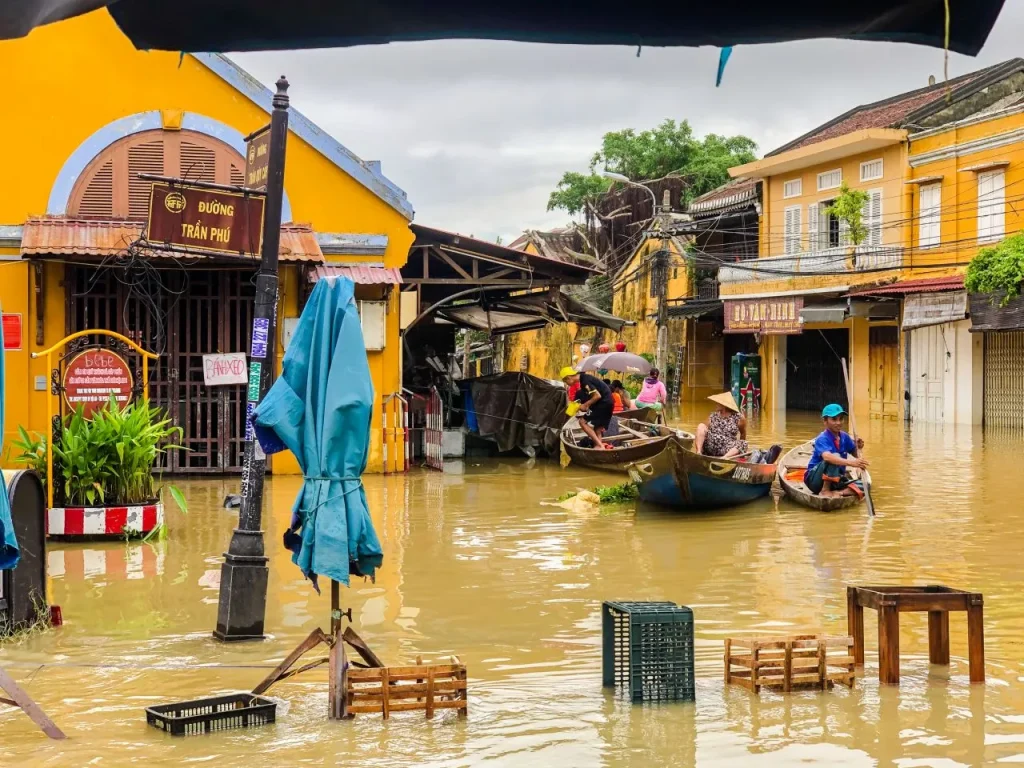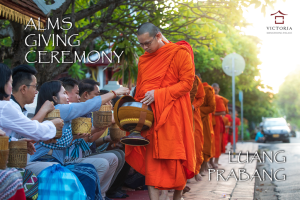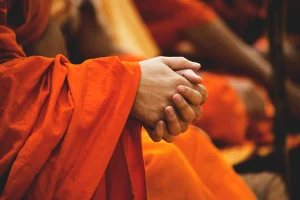If there’s anyone used to the rise and fall of fortunes, it’s the people of Hoi An. From the 2nd to 10th centuries, the seafaring Champa kingdom made Hoi An its sea hub, with nearby My Son (now also a UNESCO World Heritage site) as its spiritual center.
Just as the Champa kingdom began to wane, Hoi An rose to prominence as a busy seaport on the Maritime Silk Route. Known then as Faifoo, traders from Asia, Europe, and even the Americas came to trade in silk, porcelain, pepper, mother-of-pearl, and other treasures.
Forced into extended stays by the monsoons, Chinese and Japanese merchants left a permanent cultural mark on Hoi An, establishing communities and assembly halls, many of which can still be visited today.
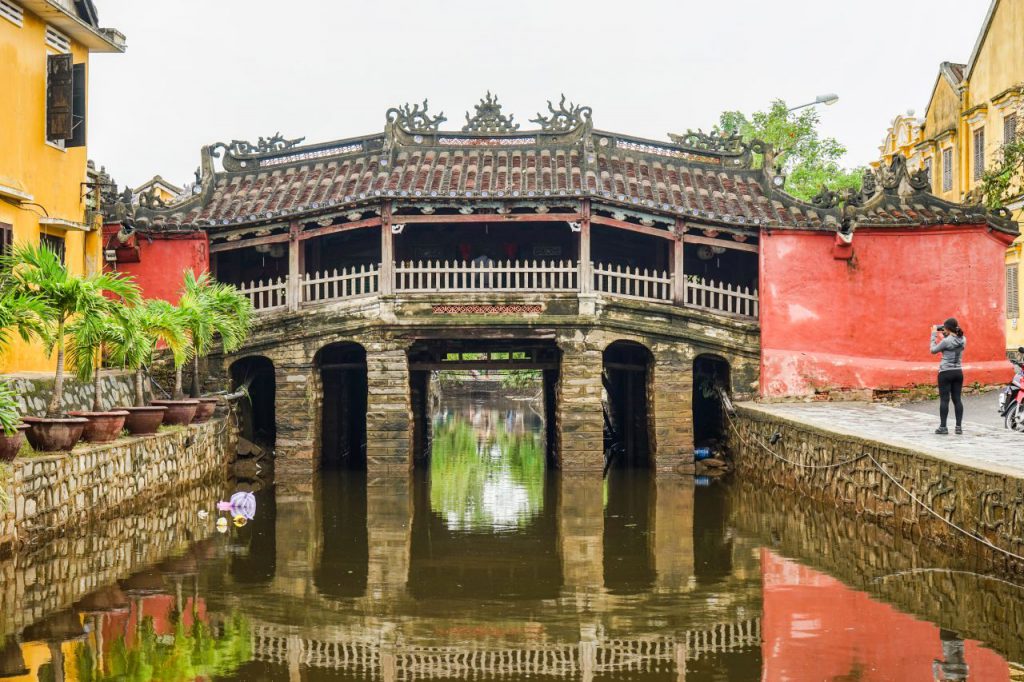
Sadly for the town, towards the end of the 19th century, the Thu Bon River silted up, and trade was moved just north up the coast to Danang. Without a purpose for being, Hoi An once again faded into a backwater fishing and farming village, visited only by the most adventurous of backpackers.
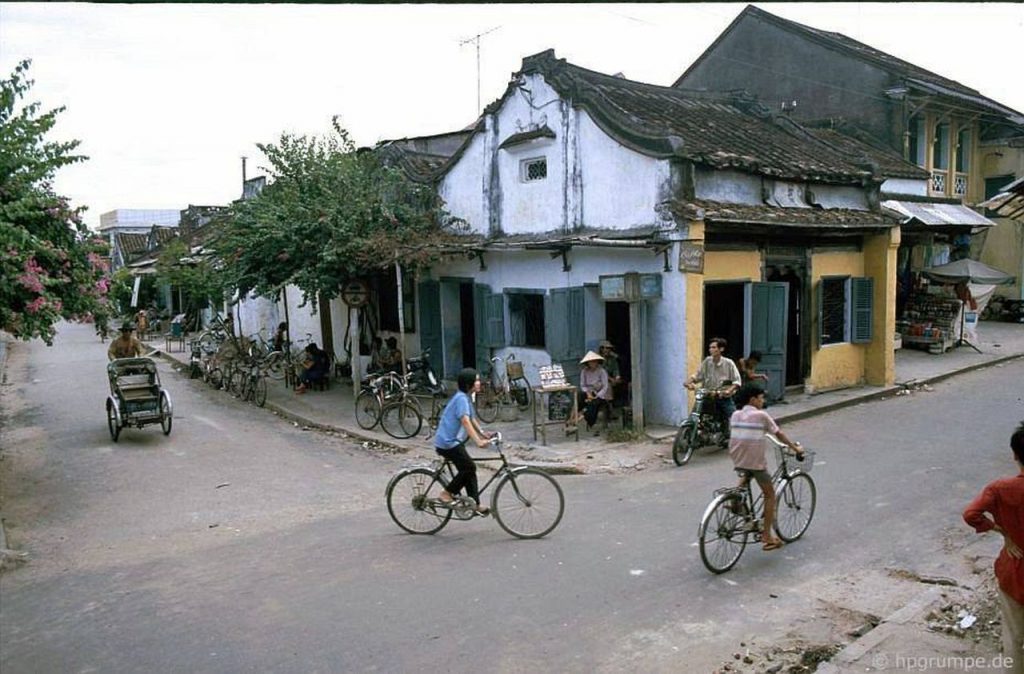
In 1999, fortune again smiled on Hoi An when it was plucked out of semi-obscurity and declared a UNESCO World Heritage Site. With newfound international attention, money began pouring in to allow the repair and upgrade of its Ancient Town, “an exceptionally well-preserved example of a South-East Asian trading port”.
Since then, Hoi An has only grown in its appeal, one of Vietnam’s most popular tourist destinations, most recently coming in 11th out of 25 of the world’s most popular destinations on TripAdvisor’s 2021 Travelers’ Choice Awards. With a record 18 million foreign tourists in 2019 to complement 85 million domestic tourists, 2020 looked to be another big year for Hoi An.
However, like the rest of the world, 2020 brought another reversal of fortune for the picturesque town. Due to the global pandemic, Vietnam closed its borders to international flights on March 25, 2020 and to date, borders remain closed. According to the General Statistics Office of Vietnam, international travelers to Vietnam in November 2020 were down 99% year-on-year, with the rare non-Vietnamese exceptions being foreign experts and technical workers taking charge of projects in Vietnam.
While tourism across the nation has suffered a tremendous setback (expected to lose up to US$23 billion in 2020 due to the pandemic), tourist-dependent Hoi An has been especially hard hit.
Visitors now find eerily quiet streets, once elbow-to-elbow with tourists, decorated by tattered lanterns and chained up banana pancake carts. For photographers, it’s a once-in-a-lifetime opportunity to capture the beauty of the town’s architecture without tourists in the frame, but for the many thousands of tour guides, shop owners, hotel workers, and others who depend on tourism for their livelihood, no tourists means no income.
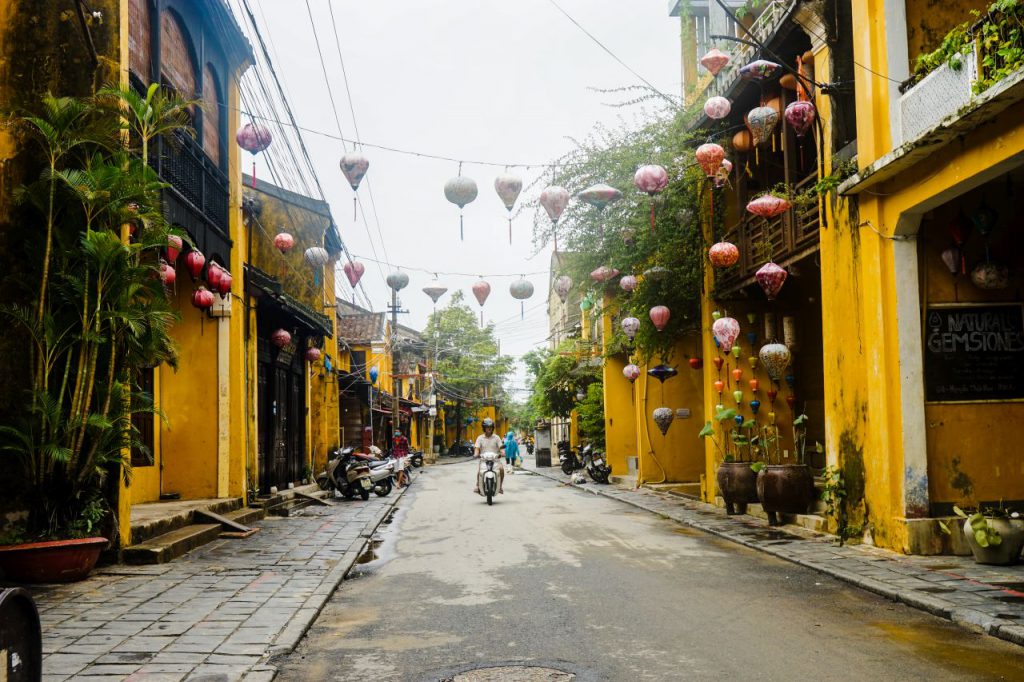
“Because there are no factories or industry in Hoi An, most of the people depend on tourism,” says Vu (aka Harry), the owner of Angiee’s Adventures. “Many tour guides have switched to teaching English, selling insurance, or doing online business. Sometimes the wife will sell stuff, and the husband makes the deliveries. It’s affected everyone, down to the people selling ice cream on the street.”
Since the pandemic first emerged, Vietnam has been stellar at its COVID-19 response, routinely recognized as being one of the most successful countries in the world in handling the coronavirus pandemic. With no community transmission (and zero deaths) from mid-April to the end of July 2020, hopes were high that Hoi An would benefit from a boom in domestic travel just in time for school summer holidays. However, towards the end of July, a second wave of infection struck nearby Danang, completely locking down the city (which is also the air and rail gateway to Hoi An) for 15 days, dashing all hopes of a summer recovery. It took nearly two months to get the second wave under control, but by then, summer was gone and along with it, the much-needed crowds.
Unfortunately, fate was not quite finished with Hoi An. Just as the town was recovering from the lockdown, another blow came in the form of the annual floods. Usually occurring in October / November, heavy typhoon rains are compounded by rising sea levels, water gushing down from the nearby mountains, and hydropower stations flushing thousands of cubic meters of water into the river.
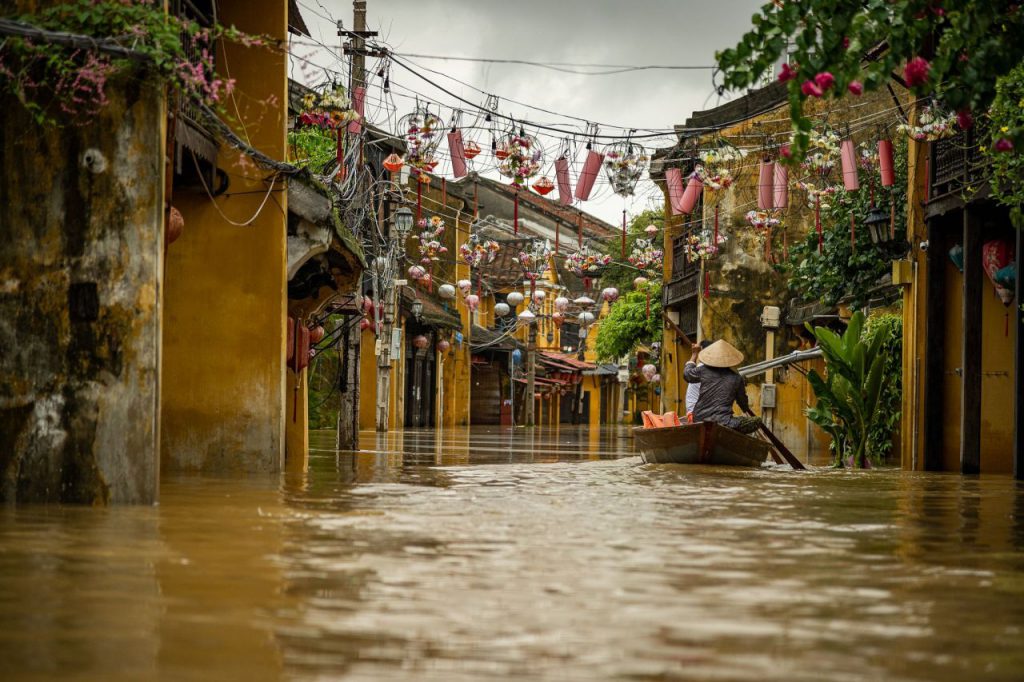
In 2020 however, Vietnam experienced at least 14 major storms, up from an average of 5-6 storms and 3 three tropical depressions a year, according to the National Center for Hydro-Meteorological Forecasting. In particular, seven consecutive tropical storms and cyclones hit the central region between October and mid-November, with the Hoi An streets closest to the river barely having time to dry out before the next storm hit.
Huyen, who has been making ties for 20 years together with her husband’s family, said: “Even after the first COVID wave and with no foreign tourists, we were still able to sell ties to office workers from Saigon and Hanoi. But since the floods, it’s been very difficult.”
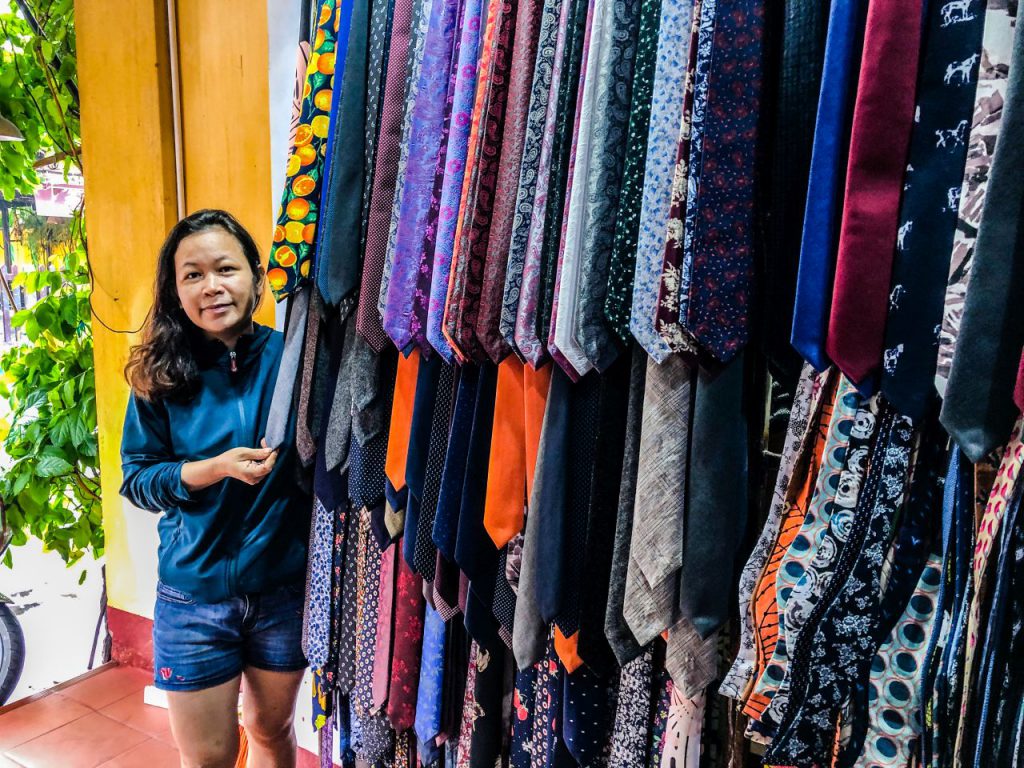
Her small shop has been shuttered, as with most businesses and many of the tourist attractions in the Ancient Town, as owners find simply closing down more cost-effective than turning on the lights and waiting for visitors who never materialize. “My daughter is in her first year of university in Danang,” says Huyen. “So this has been especially hard on the family.”
However, Huyen counts herself as one of the lucky ones. She rents her shop from the government which means she pays a fraction in rent compared to privately-owned properties. “Houses in the Ancient Town usually go for USD $3,000 – 5,000 a month, and because of fierce competition for available properties, most people have to pay rent years in advance. Otherwise, others will outbid you,” she says. In the last few months, she’s switched over to selling sweet pudding to locals.
“In Hoi An, people value the tourism industry as a way to improve their lives,” notes Harry. “It’s viewed as more safe and stable with year-round work, unlike farming where there are months off. The land here is so valuable that it’s easy to get loans to build villas for rent and homestays, but with COVID, lots have gone bankrupt or have had to sell their homes.”
However, the dire situation has cast a wide net, trapping more than just those with much to lose. “There’s a trickle-down effect,” notes Hung, who with his father has been selling chicken and rice, a Hoi An specialty, for more than 20 years under the shade of a banyan tree that’s been standing at least since French colonial times. “Hotel workers and tour guides used to come by for a quick lunch, but with no tourists, they’re opting to cook at home to save money.”
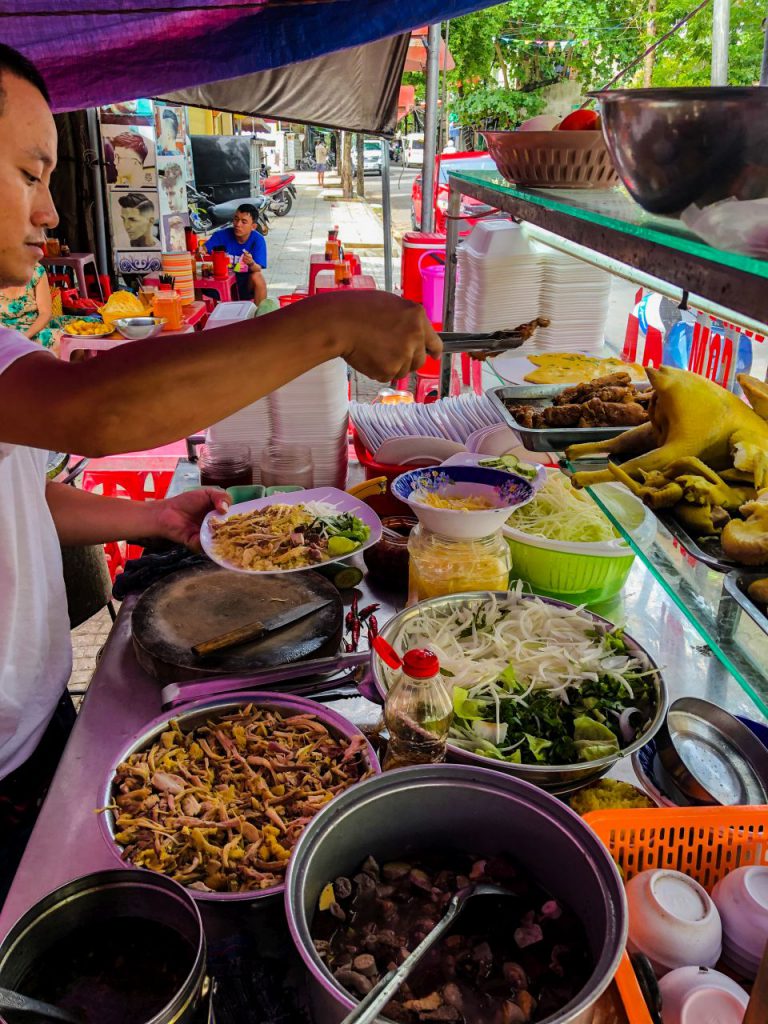
In the past year, there’s been a concerted effort between government agencies and tourism operators to boost domestic travel. Under the “Vietnamese People Travel in Vietnam” campaign, local authorities have been encouraged to reduce or all together eliminate entrance fees to relic sites, museums and other places of interest while tour providers have done everything from steeply discounting hotel rooms, air tickets, and tour packages to retooling travel products for the domestic market (like offering cooking classes in international instead of Vietnamese cuisine).
While laudable, it still hasn’t done much to change travel trends within the country. “While international tourists come all year round, Vietnamese people usually only travel during the summer when the kids are off from school and during Tet (Vietnamese Lunar New Year),” laments Harry.
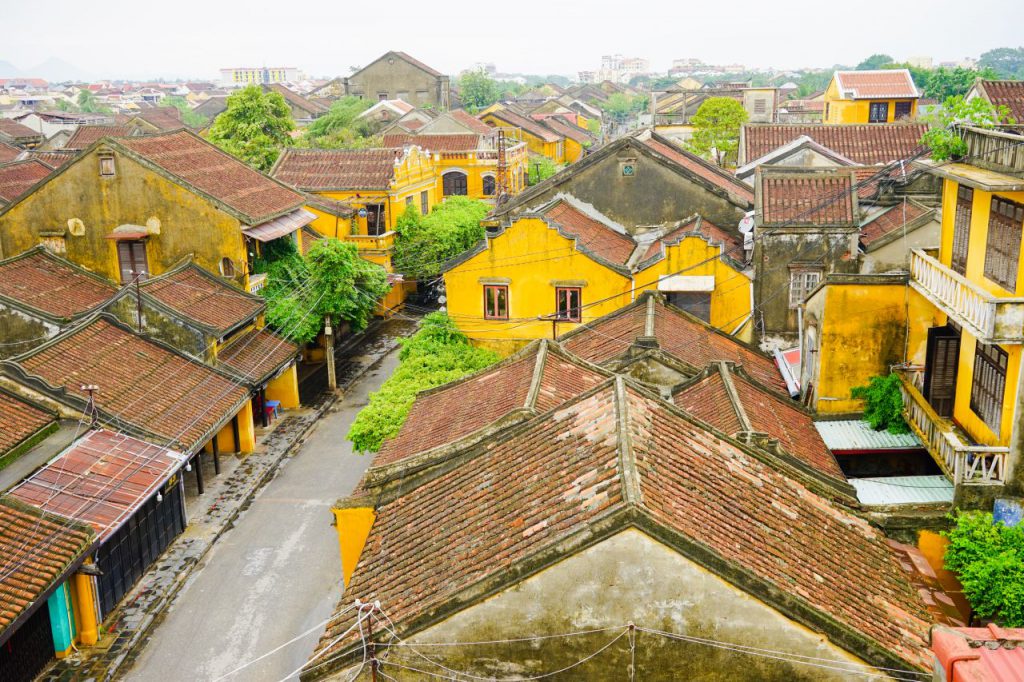
Unfortunately, fate dealt another cruel blow to the tourism industry, this time in the weeks leading up to Tet when a third outbreak occurred in the northern provinces of Hai Duong and Quang Ninh. After blessed weeks of zero cases of community transmission throughout the country, a total of 893 were announced in quick succession, derailing Lunar New Year plans for many. Even though there were no cases in or around Hoi An, the Ancient Town’s pedestrian zone was closed, and cultural events were postponed.
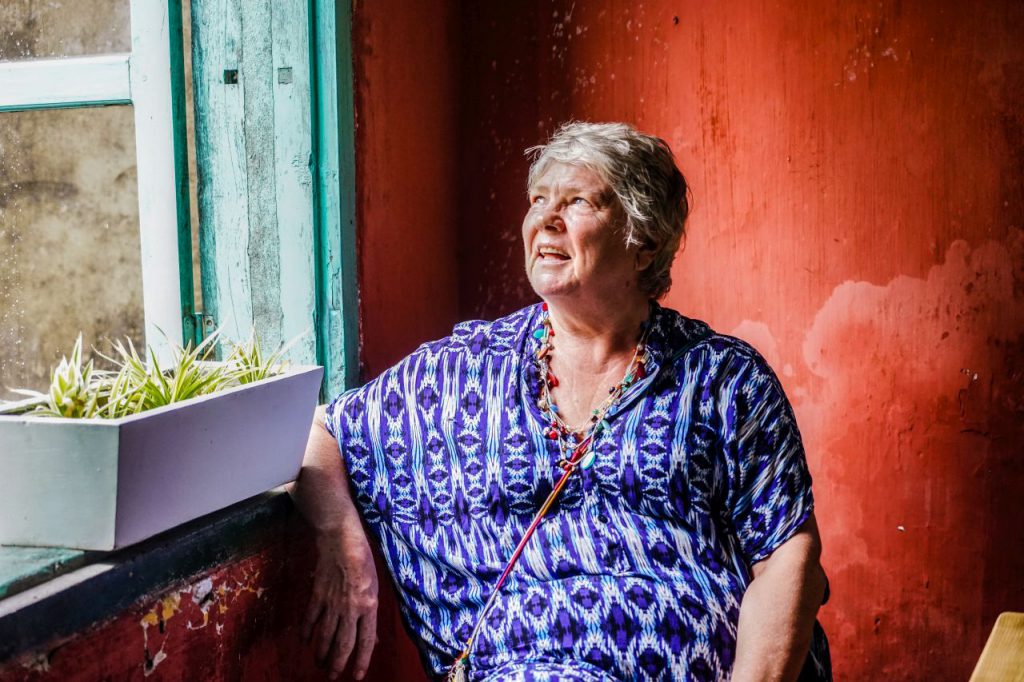
As things are now returning to a fragile “normal”, the people of Hoi An are bravely putting the pieces back together. “Throughout this period, you can see the usual kindness and generosity that comes out at flood time,” says British artist Bridget March who moved to Hoi An a few years ago to fulfill a lifelong dream of opening her own art gallery. “They help each other to clean up the mud and do it with such humor. Everyone runs errands for each other. It’s a great community and a very well-organized society. There’s such a great spirit here.”
Local government hasn’t been idle, either. “We’ve been doing a lot to prepare our stakeholders to welcome back guests in a post-pandemic world,” says Nguyen Thị Thanh Thủy of the Quang Nam Tourism Association. She lists among their many initiatives: Creating more “green tourism” products including clean agrotourism; using digital marketing to reduce advertising costs; and upskilling decision-makers in human resource management, product development, and broadening the scope of sustainable tourism.
“The government has also been working on fixing roads and sidewalks,” notes Harry. “I’ve been seeing a lot of construction and improvements around town.”
With no clear end in sight, the resourceful people of Hoi An have found new ways of adapting to the “new normal”. “COVID has been a blow to the economy but the pace of life has slowed down,” notes Ngo Kim Anh, Hotel Manager at EMM Hotel Hoi An. “Even in the rainy season, there were always tons of tourists. But now, people have more time to follow their passion.” With fewer overnight guests, the hotel has taken to renting out the swimming pool on certain afternoons to a local swimming club.
“The people of Hoi An were traditionally fishermen and farmers,” says Bridget. “It only spread into providing tourist services after UNESCO. So families can fall back on fishing and farming until it changes again. They’re very adaptable.”
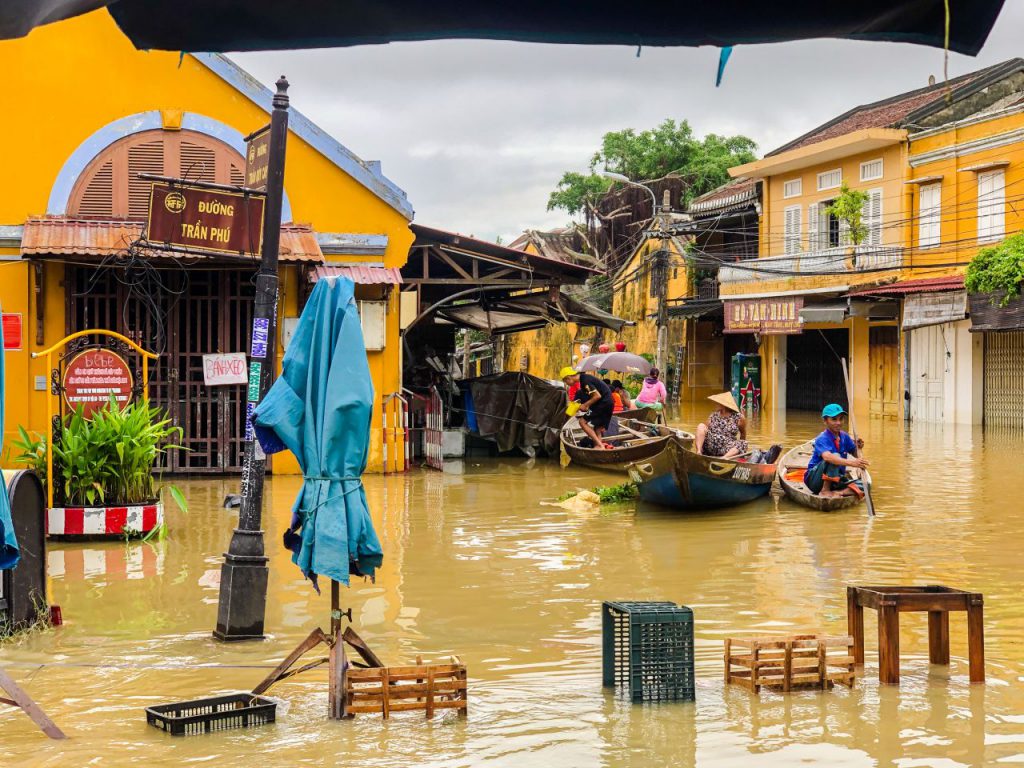
Even the torrential rains weren’t enough to completely dampen local spirits. People simply traded bicycles for canoes to navigate the trip to market while others, like Hoi An-based visual artist Nguyễn Quốc Dân, took to the flooded streets to capture a strangely beautiful, albeit wetter side of Hoi An.
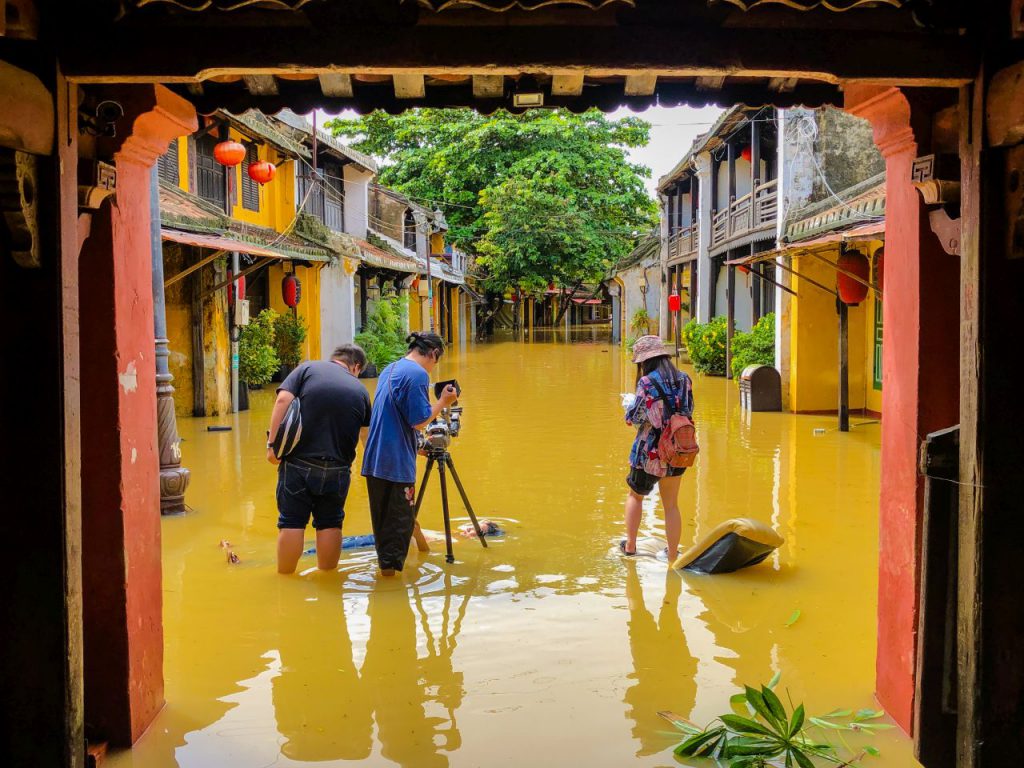
When Bridget had to close her gallery in the Ancient Town in December, she shifted to online sales and showing pieces at her home on Cam Nam Island across the river. With this unexpected downtime has come a lot of time for introspection. “COVID has really been like a mirror,” she posits. “Am I doing this for myself or for commercialism? It’s affected us all, from artists to chefs. Why am I making overpriced pasta for tourists?”
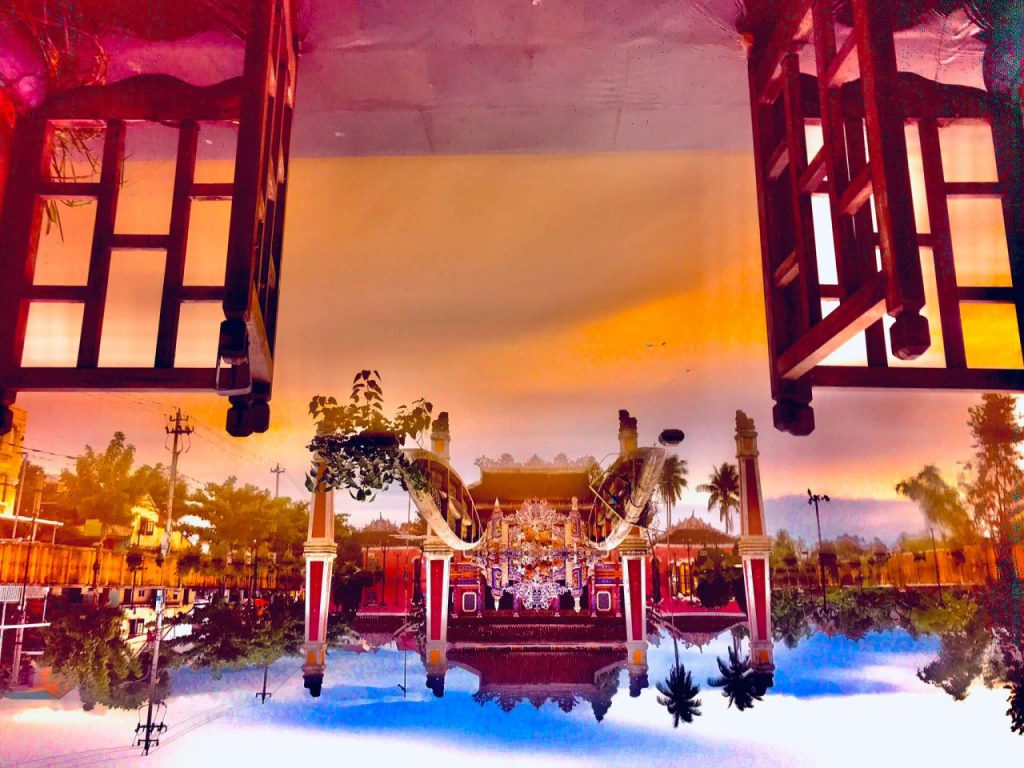
Bridget has since re-directed her artistic focus into a series of vibrantly-colored, nature-themed paintings. “The resurgence of our natural habitats due to the worldwide lockdown and ceasing of destructive mass tourism has brought the issue [of the conservation of our rainforests] to my studio and I am expressing my anger and grief through a series of paintings,” she wrote in August of the new works, donating 30% of the sales to Rainforest Trust, a non-profit environmental organization.
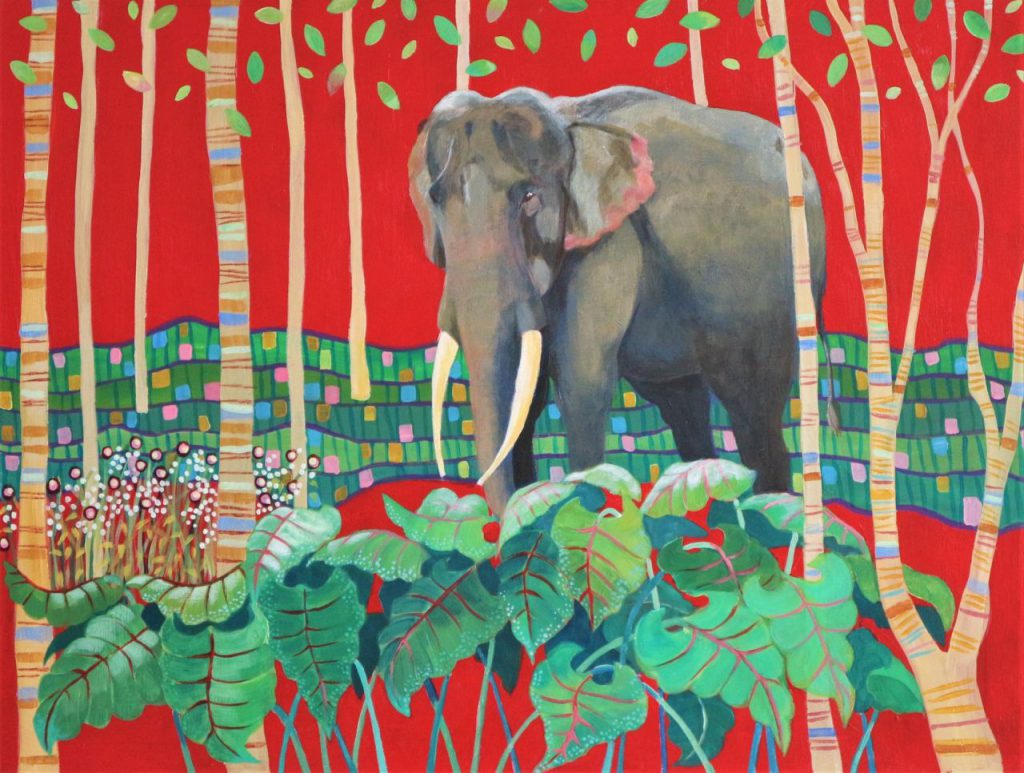
While the pandemic has separated many people from their once tourist-driven incomes, it’s also had the effect of bringing people together.
“I see people eating at home more than outside, spending more time with their families than out drinking at pubs,” observes Harry. “People are connecting more than before, calling each other and asking how they are.”
Centuries-old houses which once sold souvenirs from morning to night, are now reverting back to their original purposes. “I see people singing karaoke and families sitting down eating together like it was 20 years ago,” says Bridget. “The lovely thing for expats is that once tourists disappear, we can actually see the Vietnamese and they can see us.”
